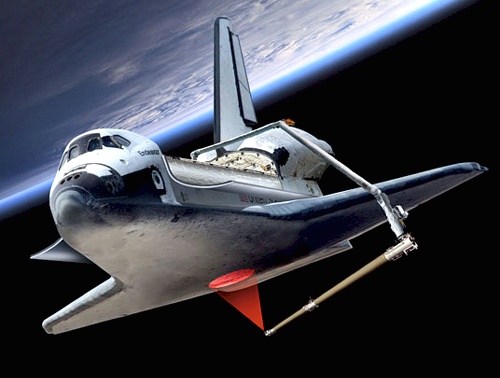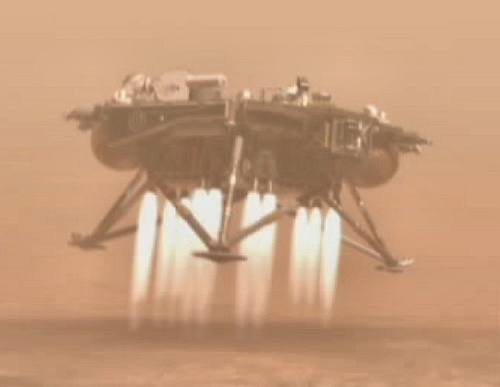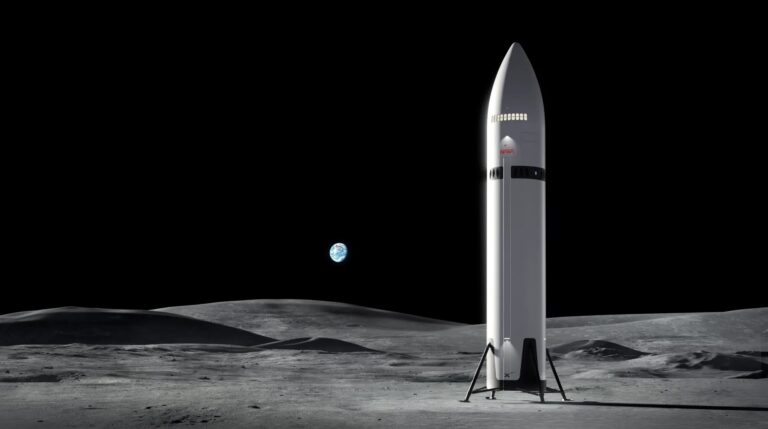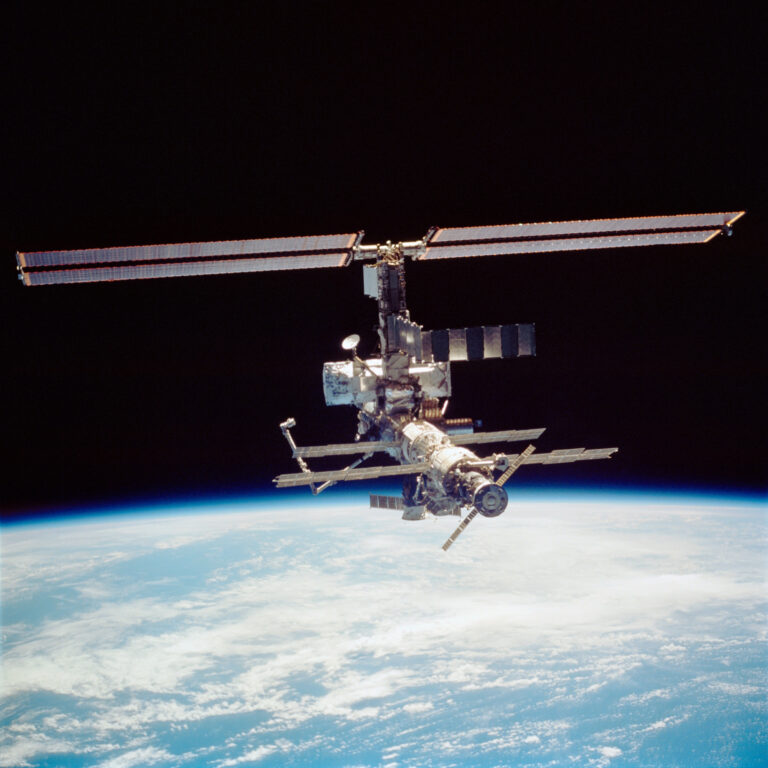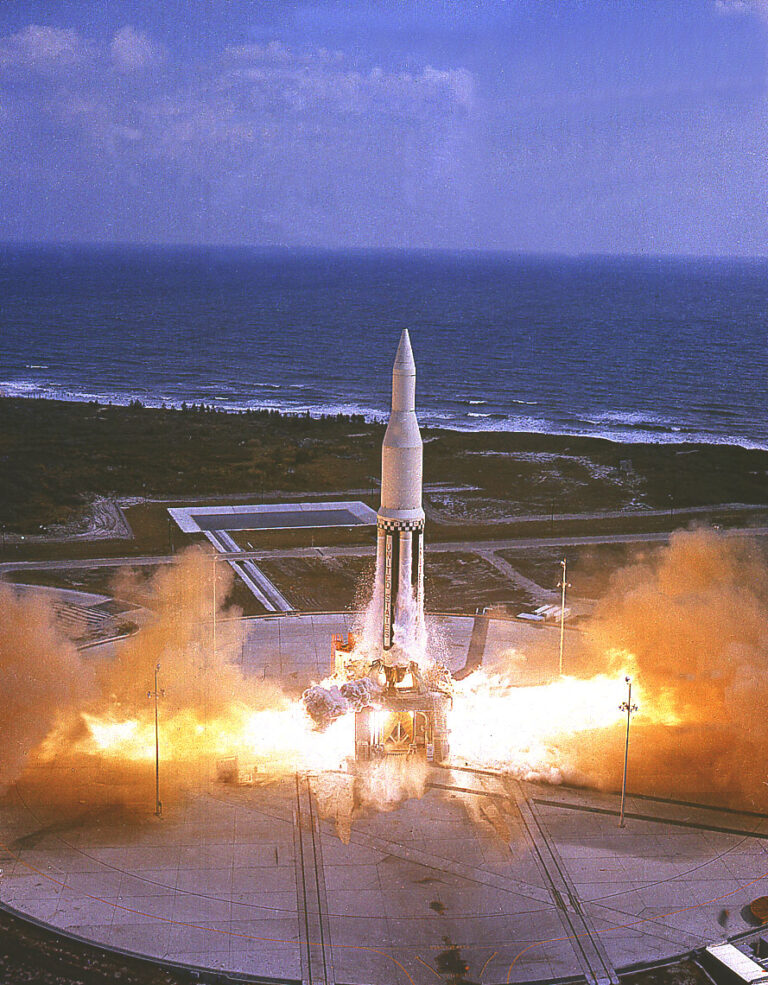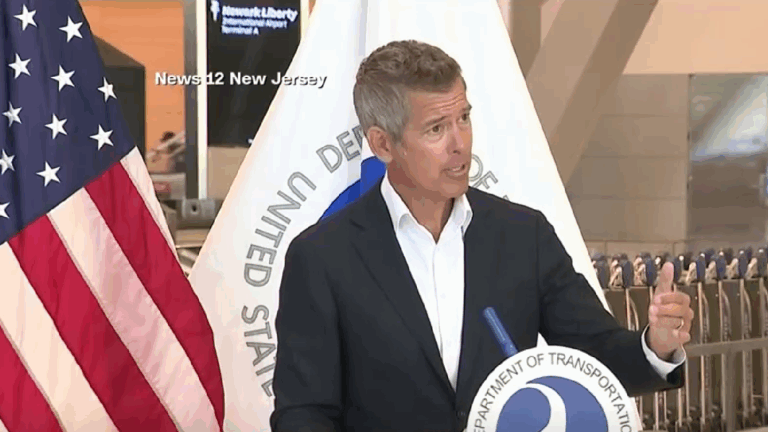Key Takeaways:
This year, if all goes according to plan, Canadians will see their next astronaut fly in the revived space shuttle program. Speaking at a press briefing last week, Marc Garneau, head of the Canadian Space Agency, gave journalists a rundown of other major activities in the pipeline for 2005.
Inspecting tiles
Number one on the agency’s agenda is space shuttle’s return to flight, now scheduled for late May or June. In 2003, the Columbia Accident Investigation Board determined that before the shuttle can fly again, astronauts must have the capacity to examine every inch of the spacecraft for signs of damage while in orbit. Canada is providing a new tool that will make this possible — a 50-foot (15 meter) extension to the space shuttle’s Canadarm.
The boom will enable astronauts to survey the entire surface of the shuttle while in space — including thermal tiles of its underside, as well as the wing leading edges. In orbit, the robot arm will grab the extension boom, which has high-tech cameras and sensors at its far end. “These sensors will be used … to make sure that there is no shedding from the external tank that may have damaged any tile,” explained Garneau.
Fixing Hubble
Canada is also gearing up for a possible Hubble repair mission. NASA announced earlier this month that Ontario-based MD Robotics was given the green light to begin designing a mission concept for a possible robotic Hubble Space Telescope rescue in 2007. NASA’s choice for a Hubble house call is a unique two-arm robot named Dextre. Developed by the same people who built the shuttle and ISS Canadarms, the Special Purpose Dexterous Manipulator — Dextre’s formal name — is a sophisticated robotic repairman with hands that can touch and feel. Remotely operated, Dextre is specially designed to carry out intricate maintenance and servicing of spacecraft, offering an alternative to hazardous human space walks.
The Hubble Space Telescope will either get a new lease on life, or ultimately, die in orbit. The prized discovery machine’s batteries and motion-control gyroscopes are expected to fail within the next few years.
One Dextre, already built and qualified for flight, is awaiting launch. This makes Dextre the only flight-ready telerobotic technology NASA can deploy in time to do the job. However, astronomers argue that the best solution for the ailing Hubble is reviving the planned-but-canceled shuttle servicing mission. NASA is not expected to make a final decision on Hubble’s fate before the end of summer.
Infrared BLAST
Meanwhile, Canadian space scientists are looking forward to the July launch of BLAST, the Balloon-borne Large Aperture Submillimeter Telescope. Launched into the stratosphere above the Antarctic, this high-flying observatory will conduct unique galactic and extragalactic surveys on star and galaxy formation at submillimeter infrared wavelengths.. A gondola carrying scientific instruments will be suspended beneath a large helium balloon. The balloon will drift at an altitude of 25 miles (40 kilometers) as winds carry the craft around the South Pole.
At BLAST’s heart is a 6.5-foot (2m) telescope that provides a combination of sensitivity, spectral coverage, and angular resolution unmatched by any facility in the world. BLAST is a collaborative project between the Canadian Space Agency, the Natural Sciences and Engineering Research Council of Canada (NSERC), the University of Toronto Department of Physics, NASA, and NASA’s National Scientific Balloon Facility.
Canada is also pushing to see the maple leaf on a future Mars mission. Canada is currently collaborating with NASA on the agency’s next Mars lander, called Phoenix, scheduled for launch in 2007. In May 2008, Phoenix will land in the northern polar region of Mars (at about 70° N). The goal is to expose the upper few feet of surface material using a robotic arm to find the ice discovered by the Odyssey mission in 2002. A 3-month primary mission will study the history of this ice and its interaction with the martian atmosphere. A team of Canadian scientists and engineers developed a sophisticated meteorological station for Phoenix to help analyze the martian arctic climate.
Beyond 2005, Canada may contribute an advanced version of an Alpha Proton Spectrometer (APX), similar to the ones on the twin martian rovers, for NASA’s Mars Science Laboratory in 2009. “I hope we can put the financing together and make it happen, because it would be a great contribution,” said Garneau. “There are even Canadians working on studies related to the European Space Agency’s ExoMars mission in 2011.” ExoMars will deploy a high-mobility rover on the martian surface to establish if life ever existed or is now present on Mars.
Return to the Moon?
Canada’s role in President Bush’s vision of returning humans to the Moon by 2020, however, remains to be determined. Discussions are under way between the two national space agencies about what key technologies Canada could provide. But Garneau made it clear that even when there is a clear fix on what Canada’s participation could be, he will have to go to the government for more funding.
“As it stands now, we cannot do any of it in our $300 million annual budget,” he said. “The chance for Canadians to go to the Moon or to Mars will depend directly on whether we are a paying customer.”

